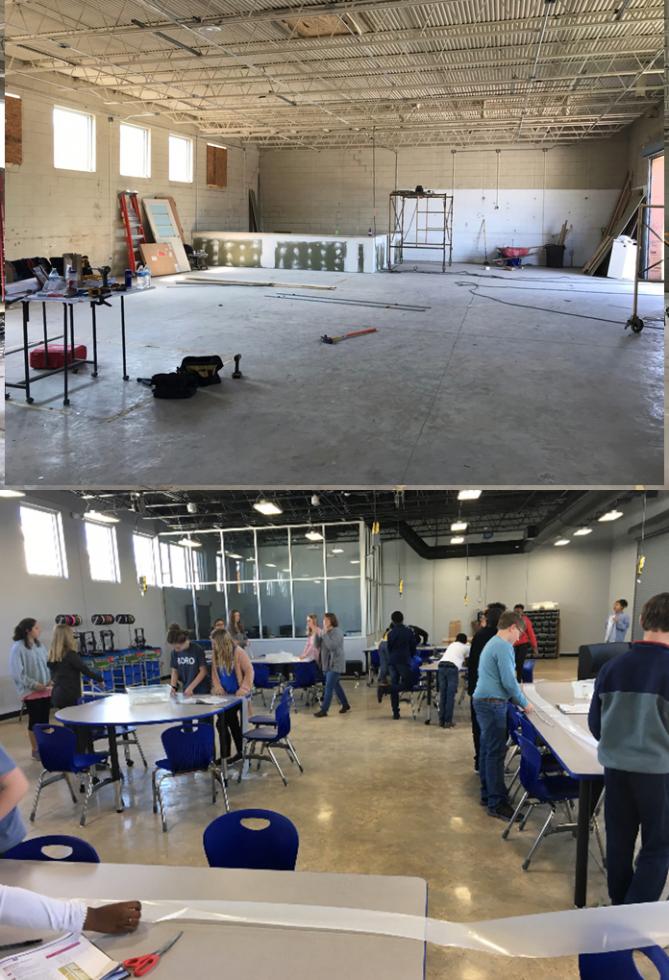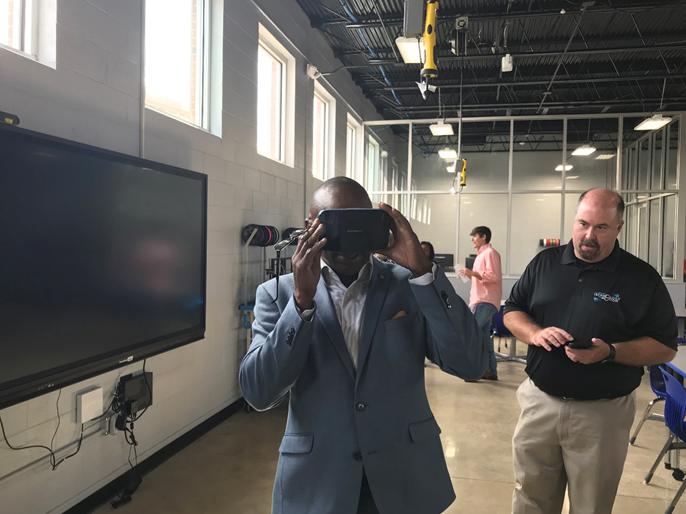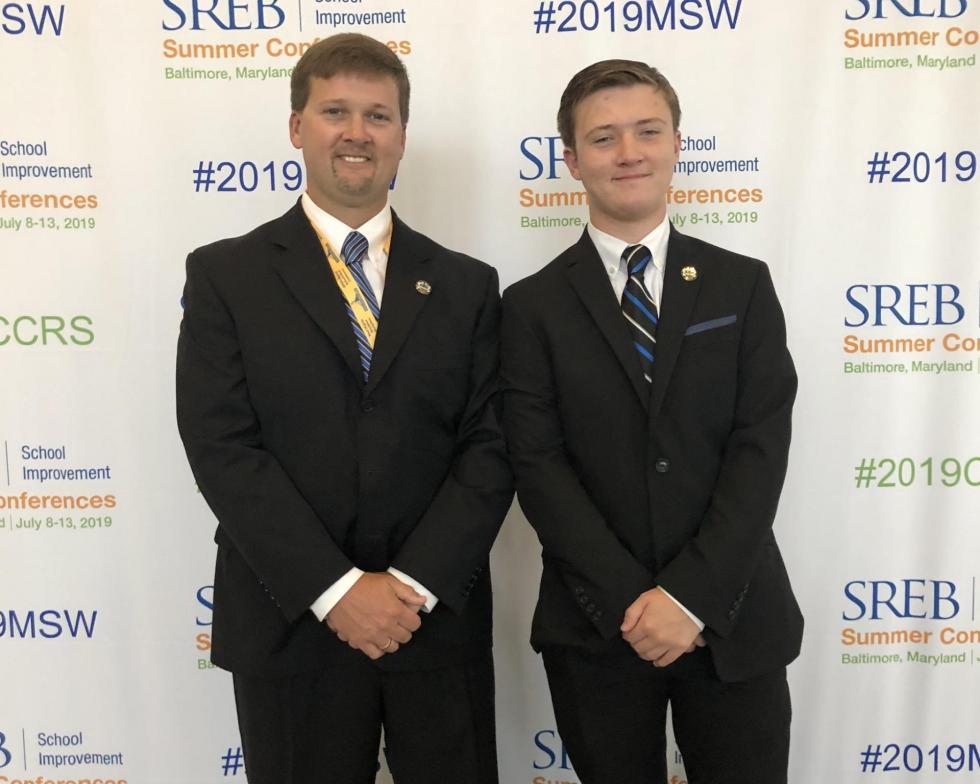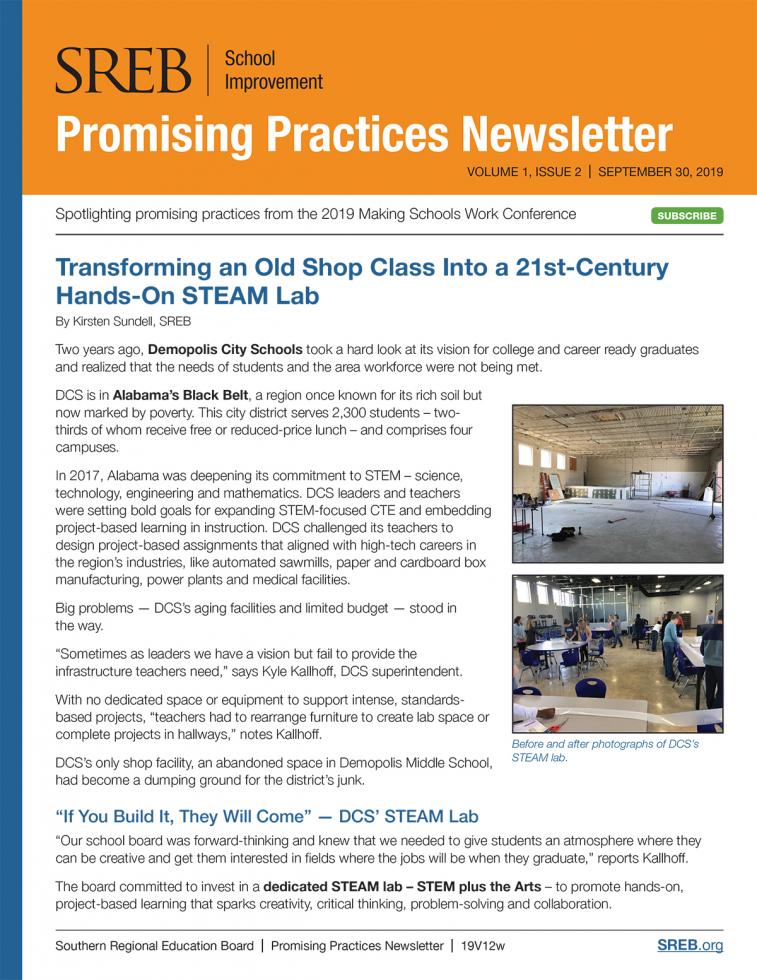Transforming an Old Shop Class Into a 21st-Century Hands-On STEAM Lab
Promising Practices From the 2019 Making Schools Work Conference
Two years ago, Demopolis City Schools took a hard look at its vision for college and career ready graduates and realized that the needs of students and the area workforce were not being met.
DCS is in Alabama’s Black Belt, a region once known for its rich soil but now marked by poverty. This city district serves 2,300 students – two-thirds of whom receive free or reduced-price lunch – and comprises four campuses.
In 2017, Alabama was deepening its commitment to STEM – science, technology, engineering and mathematics. DCS leaders and teachers were setting bold goals for expanding STEM-focused CTE and embedding project-based learning in instruction. DCS challenged its teachers to design project-based assignments that aligned with high-tech careers in the region’s industries, like automated sawmills, paper and cardboard box manufacturing, power plants and medical facilities.
 Big problems — DCS’s aging
facilities and limited budget — stood in the way.
Big problems — DCS’s aging
facilities and limited budget — stood in the way.
“Sometimes as leaders we have a vision but fail to provide the infrastructure teachers need,” says Kyle Kallhoff, DCS superintendent.
With no dedicated space or equipment to support intense, standards-based projects, “teachers had to rearrange furniture to create lab space or complete projects in hallways,” notes Kallhoff.
DCS’s only shop facility, an abandoned space in Demopolis Middle School, had become a dumping ground for the district’s junk.
“If You Build It, They Will Come” — DCS’ STEAM Lab
“Our school board was forward-thinking and knew that we needed to give students an atmosphere where they can be creative and get them interested in fields where the jobs will be when they graduate,” reports Kallhoff.
The board committed to invest in a dedicated STEAM lab – STEM plus the Arts – to promote hands-on, project-based learning that sparks creativity, critical thinking, problem-solving and collaboration.
DCS fortunately had a couple extra months’ worth of operating expenses in reserve to help repurpose and rebuild its existing shop space at DMS. By combining these local funds with federal dollars for technology, supplies and professional development and capital investments and donations to cover furniture and fixtures, DCS was able to create a state-of-the-art STEAM lab for about $500,000.
Lab 212 — named by DCS students to reflect the boiling temperature of water, or STEAM — is a flexible-use space that includes a Plexiglass-walled, 12-station computer lab built to the same specifications as a local automated sawmill.
 Alabama State Senator Bobby D.
Singleton helped secure funds for some of the lab’s furniture.
DCS welding students built the computer lab’s tables. Tables and
chairs are on casters to allow teachers to rearrange the space on
the fly. Students also used software and 3D printers to design
and build some of the furniture.
Alabama State Senator Bobby D.
Singleton helped secure funds for some of the lab’s furniture.
DCS welding students built the computer lab’s tables. Tables and
chairs are on casters to allow teachers to rearrange the space on
the fly. Students also used software and 3D printers to design
and build some of the furniture.
Available technology includes carts full of Chromebooks and virtual reality headsets, touchscreen Promethean panels, a fully stocked makerspace, 3D printers, studio art supplies, and electrical, audio and video enhancements that help circumvent the tricky acoustics of a large open space.
STEAM-Powered Learning
Lab 212 is transforming how teachers teach and students learn – both youth and adults. Although located at Demopolis Middle School, students from every grade can use the space. The lab’s 3D printers, for example, offer a hands-on way of exploring math concepts like volume and perimeter. In the lab’s maker-space, students have brought history to life by building accurate models of WWI trench warfare. Math and science student teams can develop and use models to determine the scale and properties of objects in the solar system.
“Alabama’s state science standards ask students to do things like examine, construct, analyze, engage, use evidence to explain, interpret data, gather and synthesize, and obtain and evaluate data. These are not things that are easily done in a standard classroom setting,” explains Kallhoff.
 Instead of reading from textbooks,
DCS students are exploring the length of the human digestive
tract by running oranges through 30-foot lengths of plastic,
using microscopes and software to create scientific drawings of
lumbriculus variegatus (aka the California black worm), coding,
programming and building hands-on games, and blending history and
literature through a Reader’s Theater about Rosa Parks.
Instead of reading from textbooks,
DCS students are exploring the length of the human digestive
tract by running oranges through 30-foot lengths of plastic,
using microscopes and software to create scientific drawings of
lumbriculus variegatus (aka the California black worm), coding,
programming and building hands-on games, and blending history and
literature through a Reader’s Theater about Rosa Parks.
DCS is also using Lab 212 to host professional learning events for teachers and leaders on the Alabama Reading Initiative, math standards and assessments, and technology use.
Contact: Kyle Kallhoff, kkallhoff@dcsedu.com or @kkallhoff on Twitter.


